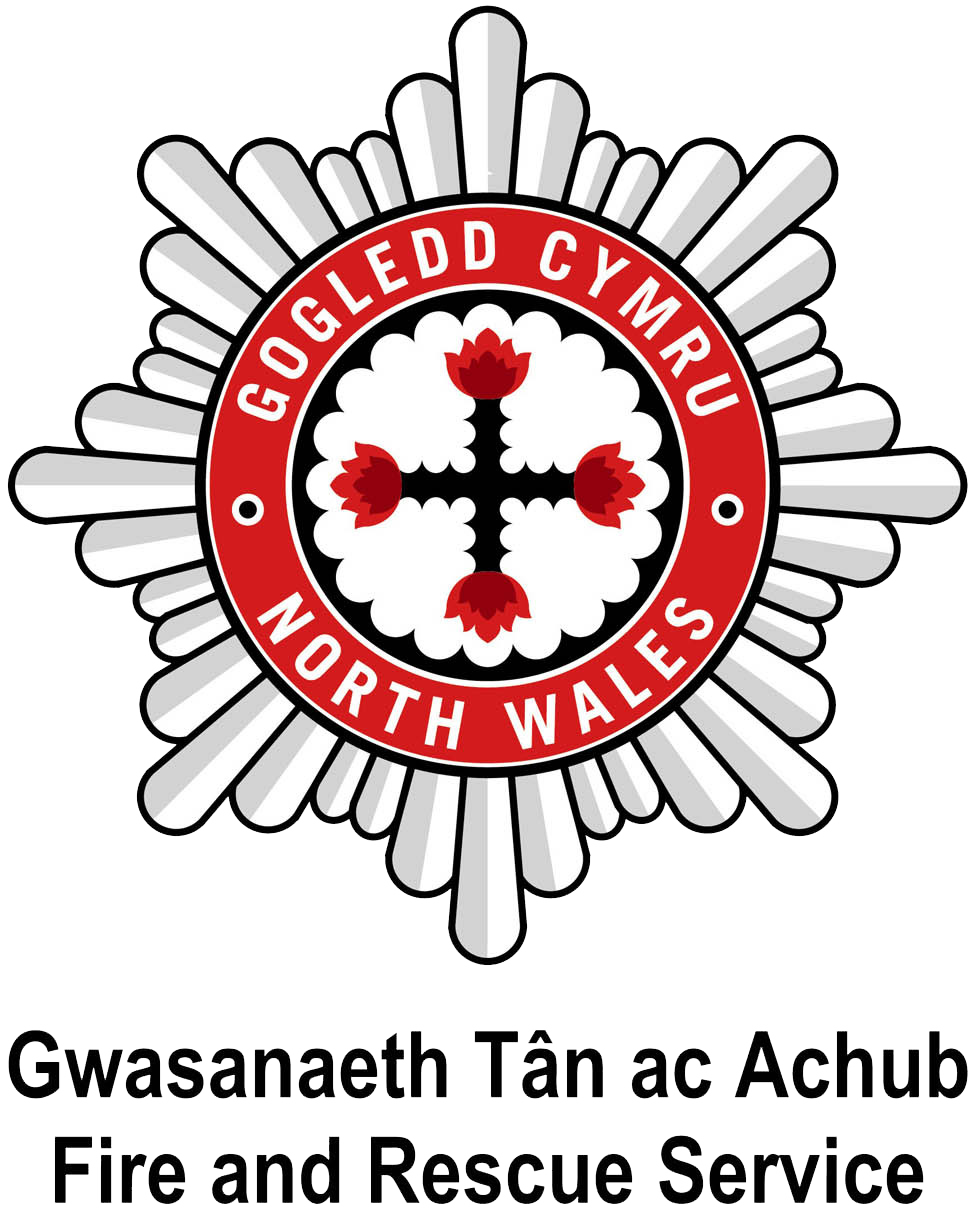Appendix
Appendix 1
North Wales Fire and Rescue Authority
Biodiversity and Resilience of Ecosystems Report 2019
Introduction
North Wales Fire and Rescue Authority has a contract with the Facilities Management Department of North Wales Police to ensure the delivery of biodiversity projects and the grounds maintenance contract for its premises.
The current grounds maintenance contract expires on 31st March 2020. In developing the specification for the new contract, actions to enhance biodiversity have been taken into consideration.
Between April and November each year the grounds maintenance contract involves the following regime:
- all grassed areas at sites are cut every two weeks;
- shrubs, hedges and trees are trimmed as required;
- herbicide is applied to control weeds to paved areas, kerbs and the base of buildings;
- hard standings (car park, paths, etc.) are cleared of litter, and all waste arising (grass, leaves, dead shrubs etc.) is removed off-site;
- controlling and managing invasive non-native species - Japanese knotweed is under strict management at 3 sites.
The potential to address biodiversity considerations within the estate is high, with 83% of sites having areas of soft landscaping (grassed areas) and 46% of those sites containing shrubs, hedges or trees. Only 17% of sites are devoid of any vegetation.
The Authority’s estate can be grouped into 3 types of site:
- Group 1 – where grounds contain hard standings, grassed areas and shrubs, hedges and/or trees;
- Group 2 – where grounds contain hard standings and grassed areas;
- Group 3 – where grounds contain hard standings only.
Biodiversity enhancement projects
To date, there have been three biodiversity enhancement projects, each project being based on a ‘habitat creation scheme’ with an objective to increase the biodiversity value of the site, provide connectivity within and between ecosystems and reduce fragmentation.
Project 1: Fire and Rescue Service Headquarters, St Asaph Business Park.
A biodiversity project has been in place at this location since 2007 in the form of a butterfly garden, hedgerow and green amenity space for staff. In conjunction with the North Wales Butterfly Conservation Group, a grassed area to the rear of the building was turned into a butterfly garden and a 128m ‘wildlife corridor’ hedgerow planted along the fence line between the Service Headquarters and the adjacent Joint Communications Centre, linking the garden with the habitats beyond the site boundaries. Because the Business Park is home to greater crested newts, an ecologist was brought in to advise during the works, as a precautionary measure.
Project 2: Nefyn Fire and Police Station, Parc Dwyfor, Nefyn.
Nefyn Fire and Police Station is a new build (BREEAM excellent) site. A biodiversity project has been in place there since 2014, when the site was completed.
The premises were built on land that was formerly an area of rough grassland fields that had been under agricultural management for some time. These fields were classified as species-poor semi-improved grassland in the Phase 1 Habitat survey prior to development.
The design and implementation of the biodiversity management plan for the site incorporates areas of wildflower grassland (for pollinators); bat, insect and bird boxes; and basking and hibernation refugia for reptiles. Planting on site comprises native plant, scrub and tree species.
Project 3: Tywyn Fire and Police Station, Pendre Enterprise Park, Tywyn.
Tywyn Fire and Police Station is a new build (BREEAM excellent) site. A biodiversity project has been in place there since 2015, when the site was completed.
These premises were built on land that was identified in the Phase 1 Habitat survey as being an area of species-poor semi-improved and amenity grasslands which contained a hedgerow with trees to the southern boundary that did not connect to the wildlife corridors along the railway line or field boundaries in the wider landscape.
The design and implementation of the biodiversity management plan for the site included a gently sloping bank made from site construction works topsoil strip clearance to create additional surface area for planting. The perimeter of the site boundary is planted with native plant, scrub and tree species, and includes areas of wildflower grassland and a wetland pond area. The planted areas connect with the existing hedgerow and trees. Bird boxes have been installed on the building and in the trees.
Biodiversity and Resilience of Ecosystems Action Plan
This Action Plan describes the Authority’s contribution to the Nature Recovery Action Plan for Wales (NRAP) objectives, with regards to the management of grounds and the maintenance and enhancement of biodiversity on Authority premises.
NRAP Objective 1: Engage and support participation and understanding to embed biodiversity throughout decision making at all levels.
North Wales Fire and Rescue Authority initially committed to addressing biodiversity on its estate through its Sustainable Development Action Plan (SDAP) which covers the period 1st April 2007 to 31st March 2020. The SDAP is implemented and managed through a contract with North Wales Police’s Facilities Management Department. Data, information and reports relating to subject areas under the SDAP are provided to the Fire and Rescue Authority and senior management of the Fire and Rescue Service as required or requested.
Raising awareness of biodiversity issues has been mainly project site-based. For example, the Fire and Rescue Headquarters biodiversity project provided staff with information on the project and the reasons why it was being undertaken. There has been good engagement with the scheme, with staff photographing species (butterflies and other insects) and providing feedback on any issues to the Facilities Management Department.
NRAP Objective 2: Safeguard species and habitats of principal importance and improve their management.
The Service does not have any protected sites within its estate. However, the Fire and Rescue Headquarters is located on the St Asaph Business Park which is home to protected greater crested newts, so any grounds disturbance works take into consideration the legislative requirements pertaining to the newts.
NRAP Objective 3: Increase the resilience of our natural environment by restoring degraded habitats and habitat creation.
This objective will be met through the implementation of the new Grounds Maintenance and Biodiversity Enhancement Contract, commencing on
1st April 2020. The specification for the new contract is currently under development. Each site is being assessed for its grounds maintenance requirements and habitat creation potential, with a site-specific regime being written for each site, including site plans and measurements of vegetated areas. There will be site-specific requirements, but the main regimes to be put in place from the 1st April 2020 are:
Grassed Areas: Unless the grassed area needs to be maintained as a formal feature or it is too small, the cutting regime will be reduced from every two weeks between April and August to one cut in the spring and one in the autumn; thus allowing the grass to grow between April and August each year to increase the habitat area available to pollinators and other species.
Where grassed areas are to be left to grow between April and August, a strip along the edge of the grass next to hard standings will be cut regularly, to demarcate the biodiversity area, indicate the area is being managed and allow for any health and safety considerations for personnel using the site. An assessment will be undertaken of the sites in July 2020 to determine the success of the Year 1 growing regime and modifications required for Year 2 determined. For areas of grass that are too small to leave to grow, these will be assessed for alternative ‘pollinator friendly’ habitats, such as flower-beds or planters.
Shrubs and Trees: All trees will be recorded in a tree inventory, stating location, any tree protection orders, species, approximate age, condition (to determine the health of the tree and to undertake risk assessments relating to the tree itself from disease such as ash die-back and to property or people from e.g. dead branches which could potentially fall).
Where trees need to be removed, they will be replaced with suitable native species. Where trees have been removed in the past and gaps in the habitat exist, where viable these gaps will be closed by planting new trees. Hedges and shrubs will be trimmed at the appropriate time of year and will take into consideration species that may be using them, such as nesting birds.
Where shrubs or hedges need to be renewed or repaired, flowering species (such as hawthorn) will be used as a feed stock for pollinators. Log piles, bat, bird and insect boxes will be installed at sites were viable.
Awareness Raising of Biodiversity: North Wales Fire and Rescue Service personnel will be informed of the change of grounds maintenance regime and the reasons behind it. Public information boards will be displayed at sites where the front is subject to a project.
NRAP Objective 4: Tackle key pressures on species and habitats.
Japanese knotweed control is in place at three sites and is subject to ongoing status monitoring.
An assessment of the risk to the ash trees on the Authority’s premises from ash die-back disease will be undertaken in the spring of 2020 when the trees come back into leaf.
Using the information from its tree inventory, the Service will liaise with Natural Resources Wales to calculate the carbon sequestration value of the trees. The decarbonisation value to the Service’s carbon footprint as a result of tree carbon sequestration within the estate will be determined.
If a green space for staff, visitors or community groups is created, seating will be sourced from sustainable and social sources.
The use of pesticides and herbicides; the Service already specifies to contractors to ensure that the use of these substances is proportionate, that they are not applied to wet foliage or when rain is expected, that all litter and waste arising is removed prior to spraying and that their equipment is fitted with approved guards to prevent spray drift.
NRAP Objective 5: Improve our evidence, understanding and monitoring:
A biodiversity inventory of the Authority’s estate will be produced, comprising site plans, measurements of grassed areas and habitats on site.
The baseline year for the inventory will be the 2019/20 financial year, where sites have been subject to the current grounds maintenance regime.
The Inventory will be updated annually, reflecting projects undertaken at each site and further works required. All Inventories, data and information will be accessible to Cofnod (the North Wales Local Environmental Records Centre), the Wales Biodiversity Partnership, local Biodiversity Officers, Public Services Board partner organisations, North Wales Wildlife Trust and any other interested parties.
NRAP Objective 6: Put in a place a framework of governance and support for delivery:
The day-to-day delivery of biodiversity action at the Authority’s sites is administered through the Environmental and Energy Conservation Section of North Wales Police’s Facilities Management Department.
The Service will seek support from Public Services Board members and partner organisations and local wildlife groups for the species identification at sites. For example, consideration will be given to hosting a BioBlitz in conjunction with the Wildlife Trust, opening the grounds of a fire station for the day to members of the public and ecology experts to help assess and record species found on site; with the results being recorded with Cofnod.

